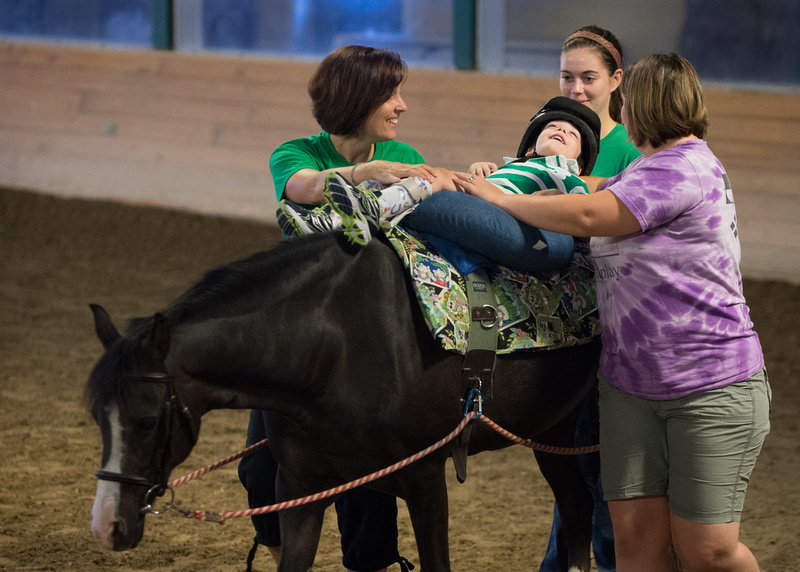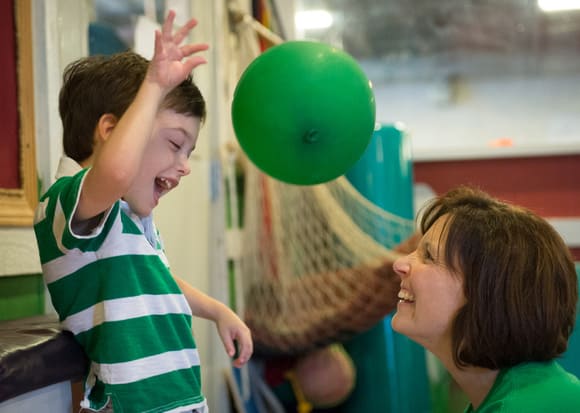 When a horse's movement is transferred to a patient through hippotherapy, it produces a combination of sensory, motor and neurological input that we use to treat a wide variety of diagnoses. Horses create a dynamic, three-dimensional movement that cannot be reproduced in a traditional clinic setting. The gait, or stride of the horse, coupled with the animal's warmth, provide numerous benefits.
When a horse's movement is transferred to a patient through hippotherapy, it produces a combination of sensory, motor and neurological input that we use to treat a wide variety of diagnoses. Horses create a dynamic, three-dimensional movement that cannot be reproduced in a traditional clinic setting. The gait, or stride of the horse, coupled with the animal's warmth, provide numerous benefits.
Hippotherapy and Cerebral Palsy
Children's TherAplay incorporates the tool of hippotherapy into traditional physical and occupational therapies for children with cerebral palsy, a condition caused by brain damage that effects posture and movement.
Hippotherapy is a therapeutic intervention that utilizes the movement of horses to provide engaging, enjoyable, and challenging activities that can significantly improve muscle tone, posture, balance, walking abilities, and more.
How Does Hippotherapy Work?
The idea behind hippotherapy is that the horse's movement provides a sense of rhythm to the rider as well as forces the rider's torso and hips to align and move in the proper physical way. Hippotherapy for patients with cerebral palsy essentially improves rhythm and movement, encourages step spacing (horses step with approximately the same frequency as humans), and promotes normal off-horse movement by training natural motor responses.
Benefits of Hippotherapy
Hippotherapy can help children with cerebral palsy on many levels. It contributes to a rider's well being physically, psychologically, and emotionally. Some of the physical impairments that may be improved by hippotherapy in people with cerebral palsy are:
- Abnormal tone
- Impaired coordination
- Impaired communication
- Decreased mobility
- Poor posture
- Impaired balance
- Impaired limbic system function
Improvement in these areas can lead to improvement in gross motor skills (walking, standing, sitting, etc.), speech, comprehension, and behavior, including motivation, attention, and arousal.
Therapy with our horses can also be very emotionally rewarding for kiddos and their families. The bond that develops between a child and a horse during therapy sessions is something that a child will both cherish and be motivated by.
For more information, email us.

